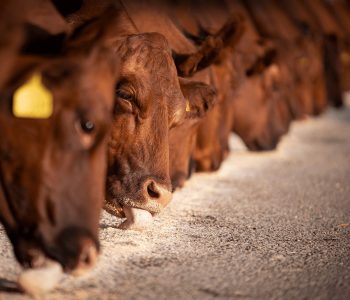Growth promoters are substances administered to livestock—either through feed additives or injections—with the goal of enhancing weight gain, feed efficiency, carcass yield, and in some cases, milk production. However, while these tools offer productivity benefits, their impact on meat quality and consumer safety has raised concerns within the livestock industry and among regulatory bodies.
Types and Effects of Growth Promoters
Among the various growth promoters, beta-agonists are perhaps the most controversial. These compounds increase muscle mass and carcass yield by redirecting nutrients away from fat deposition. Despite these production gains, meat from animals treated with beta-agonists tends to be darker, tougher, and less tender, due to changes in muscle composition, water retention, and postmortem enzymatic activity. For example, clenbuterol, a widely known beta-agonist, can cause significant enlargement of muscle fibers—up to five times their original diameter—resulting in meat that is more difficult to chew.
Beyond affecting texture, clenbuterol residues in edible tissues like liver and kidneys pose serious human health risks, including cardiovascular issues, tremors, increased blood pressure, and even carcinogenic effects. Because of these risks, its use has been banned in most countries, though illegal usage continues in some areas.
Hormonal Implants and Antithyroid Agents
Hormonal implants, including natural (estradiol, testosterone) and synthetic (trenbolone acetate, zeranol) hormones, are permitted in some countries like the U.S. and Mexico, but banned in the European Union. These implants boost growth rate and feed efficiency, leading to leaner carcasses, yet they can negatively affect meat tenderness and marbling, both key indicators of meat quality.
Historically, antithyroid compounds were used to stimulate muscle growth through water retention, but they also increased fat deposition, leading to consumer rejection and eventual discontinuation.
Probiotics, Additives, and Antibiotics
On the other hand, antibiotics, once widely used as growth promoters, are now heavily restricted or banned in many regions due to concerns over antimicrobial resistance. Countries like the U.S., Argentina, and EU members now allow antibiotics only for therapeutic purposes, warning that misuse can contribute to the emergence of “superbugs” that jeopardize both animal and human health.
How Growth Promoters Impact Meat Quality
-
Darker color (DFD meat) due to animal stress.
-
Reduced tenderness linked to decreased enzymatic activity postmortem.
-
Lower marbling, which affects flavor and juiciness.
-
Greater water retention, resulting in “spongy” or “rubbery” textures.
These alterations are especially prominent with beta-agonists and hormonal implants, which alter muscle physiology and collagen content, making the meat less appealing to consumers.
Final considerations
In conclusion, while growth promoters are effective tools for enhancing productivity, their impact on meat quality, animal welfare, and public health cannot be overlooked. The livestock industry must weigh the economic benefits against potential market rejection and safety risks, moving toward more sustainable and transparent practices.
Source: Agroglobal
